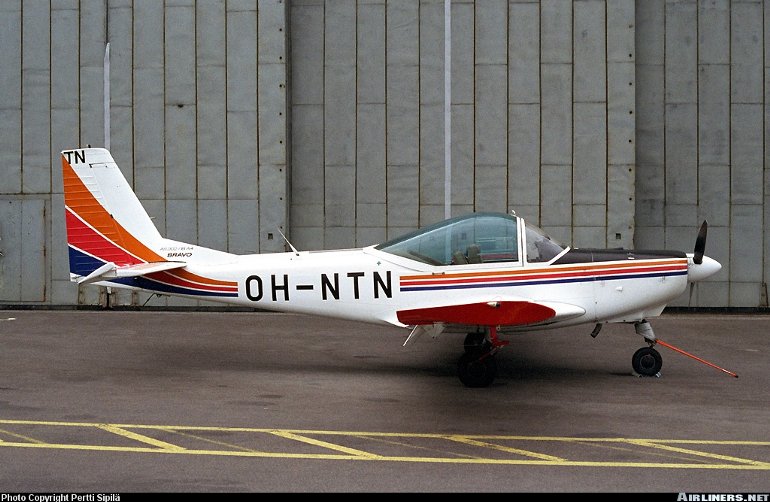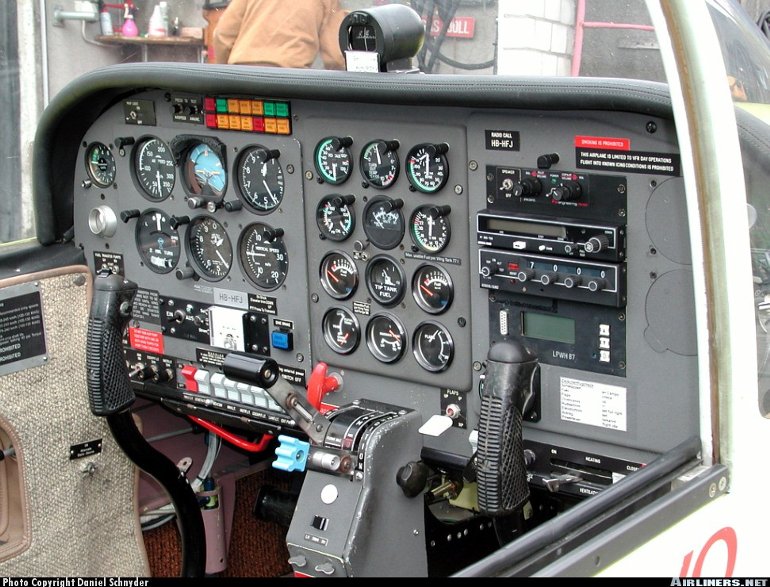Aircraft Technical Data
FFA AS-202 Bravo


| Details | |
| Country of Origin | Switzerland |
| Type | Two seat basic trainer and aerobatic light aircraft |
| History | Although largely in operation with military air arms as a basic trainer, small numbers of the FFA Bravo are also in civilian hands, used primarily as aerobatic and basic pilot trainers. Design of the Bravo dates back to the late 1960s, with original design work undertaken by SIAI-Marchetti of Italy, but with production and subsequent development work the responsibility of FFA (a company originally established by Dornier as its Swiss subsidiary). The first prototype to fly was Swiss built, it took to the air for the first time on March 7 1969. An Italian built prototype followed soon after on May 7, while the first production standard aircraft flew on December 22 1971. Initial production concentrated on the AS-202/15 and 34 were built through to the early 1980s. The definitive production model was the AS-202/18A-4, which first flew in August 1974 and received its certification in late 1975. This version differs from the original 15 in having a more powerful 135kW (180hp) engine. The principle civil Bravo operator was British Aerospace Flight Training (Prestwick) in Scotland which operated 11 (named Wrens). One crashed, but the remaining 10 were sold to Finland where they now fly with Pilot Factory Flight Training (Helsinki). Two other models have been developed, although single aircraft of each have flown only. The first was the 195kW (260hp) Textron Lycoming AEIO-540 powered Bravo AS-202/26A, which first flew in 1979, the second was the 240kW (320shp) Allison 250-B17C turbine powered Bravo AS-202/32TP which flew in 1991. Swiss certification was awarded in 1995. The Bravo is still offered for sale although none have been delivered since 1989. In the absence of Bravo production FFA builds components for other manufacturers under subcontract. |
| Powerplants | AS-202/15 - One 110kW (150hp) Lycoming O-320-E2A flat four piston engine driving a two blade fixed pitch McCauley propeller. AS-202/18A-4 - One 135kW (180hp) fuel injected Textron Lycoming AEIO-360-B1F driving a two blade constant speed Hartzell propeller, or optionally a three blade Hoffmann prop. |
| Performance | AS-202/15 - Max cruising speed 210km/h (114kt), economical cruising speed 203km/h (110kt). Initial rate of climb 633ft/min. Service ceiling 14,000ft. Range with max fuel and no reserves 890km (480nm). AS-202/18A-4 - Max speed 240km/h (130kt), max cruising speed 226km/h (122kt), economical cruising speed 205km/h (110kt). Initial rate of climb 800ft/min. Service ceiling 17,000ft. Range with max fuel and no reserves 1140km (615nm). |
| Weights | AS-202/15 - Empty equipped 630kg (1388lb), max takeoff 999kg (2202lb) for Utility category, 885kg (1951lb) for Aerobatic. AS-202/18A-4 - Operating empty 710kg (1565lb), max takeoff 1080kg (2380lb) for Utility category, 1050kg (2315lb) for Aerobatic category. |
| Dimensions | Wing span 9.75m (32ft 0in), length 7.50m (24ft 7in), height 2.81m (9ft 3in). Wing area 13.9m2 (149.2sq ft). |
| Capacity | Two pilots side by side, plus one passenger in rear. |
| Production | Approximately 34 15s and 180 18s built, with most in service with military customers. |
| Related Links | FFA AS-202 Bravo |
The backbone of this section is from the The International Directory of Civil Aircraft by Gerard Frawley and used with permission. To get your own copy of the book click here. |
|








